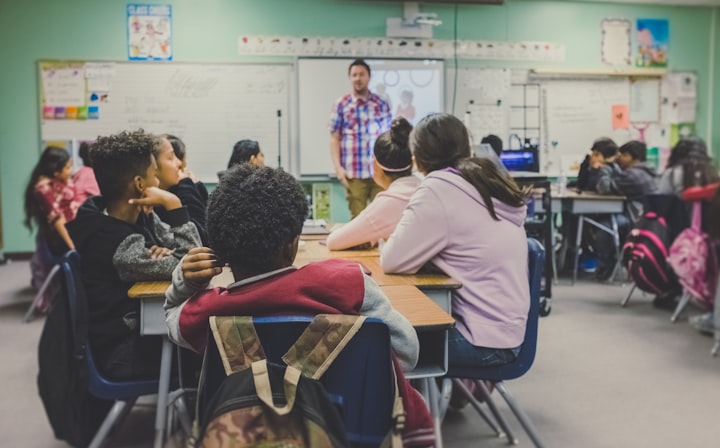Annittra Atler on How to Create a Welcoming Learning Environment in the Classroom
Annittra Atler discusses how to create a welcoming learning environment in the classroom.

A welcoming learning environment fosters student engagement, motivation, and academic success. When students feel safe, accepted, and valued in the classroom, they are more likely to actively participate, collaborate with their peers, and take risks in their learning. Below are effective strategies and practices that educators can employ to create a welcoming learning environment that supports the diverse needs of students.
Develop Positive Teacher-Student Relationships
Building solid relationships with students is foundational to creating a welcoming learning environment. Take the time to get to know your students individually, showing genuine interest in their lives, backgrounds, and aspirations. Listen actively and empathetically, fostering open lines of communication. Establishing mutual respect and trust allows students to feel comfortable approaching you with questions or concerns, creating a supportive atmosphere.
Foster a Sense of Belonging
Every student should feel that they belong in the classroom community. Encourage inclusivity and celebrate diversity by acknowledging and valuing students’ unique backgrounds, cultures, and perspectives. Create opportunities for students to share their experiences and stories, fostering a sense of belonging and understanding among classmates. Establish norms and expectations promoting kindness, respect, and empathy, ensuring all students feel accepted and appreciated.
Establish Clear Classroom Expectations
Communicate expectations regarding behavior, participation, and academic performance. Create a safe and structured environment where students understand the boundaries and guidelines. Involve students in establishing classroom rules, allowing them to take ownership of their learning environment. Ensure that expectations are consistently enforced, promptly, and fairly addressing disruptive behavior. Clear expectations give students a sense of security and enable them to focus on learning.
Differentiate Instruction
Recognize and accommodate the diverse learning needs and abilities of your students. Implement differentiated instruction strategies that allow for individualized learning experiences. Provide various instructional materials, activities, and assessments to cater to different learning styles and preferences. This approach ensures every student feels valued and supported in their unique learning journey.
Create a Positive Physical Environment
The physical layout of the classroom significantly impacts the learning atmosphere. Arrange desks or seating to promote collaboration, interaction, and student engagement. Use colors, visuals, and displays to create a warm and inviting atmosphere. Ensure the classroom is organized, clean, and clutter-free, providing a comfortable space for students to focus on learning.
Encourage Collaboration and Peer Interaction
Promote opportunities for students to work collaboratively and engage in meaningful peer interactions. Assign group projects, cooperative learning activities, and discussions encouraging teamwork, communication, and problem-solving. Create a supportive environment where students feel comfortable sharing their thoughts, asking questions, and seeking help from their peers. Collaboration fosters a sense of community, promotes social skills, and enhances the overall learning experience.
Provide Constructive Feedback and Support
Offer timely and constructive feedback to students, focusing on their strengths, progress, and areas for improvement. Provide specific and actionable suggestions for growth, emphasizing effort and improvement rather than focusing solely on grades. Offer support through one-on-one conferences, extra resources, or assistance to help students succeed. This approach builds students’ confidence, motivates them to continue learning, and fosters a positive attitude toward their academic journey.
Creating a welcoming learning environment requires intentional effort and a commitment to student well-being. Educators can cultivate a classroom where every student feels safe, valued, and eager to learn by developing positive relationships, fostering a sense of belonging, and implementing effective instructional strategies. A welcoming learning environment sets the stage for academic achievement, personal growth, and a lifelong love for learning.
About Annittra Atler
Annittra Atler is the Associate Superintendent of Special Education for Albuquerque Public Schools (APS). She grew up surrounded by educators, so it is no surprise that she gravitated toward the industry as a career. Annittra spent summers watching her mother teach at her dance studio. While her mother’s passion for teaching was infectious, Annittra didn’t choose education as a college major at first.
The University of New Mexico is where Annittra earned her bachelor’s degree. She gravitated toward Elementary Education and Teaching as soon as she realized it was her calling. After graduation, her first position was as an elementary education specialist, where she worked with teachers and administrators to develop new teaching methods, curricula, and assessment plans. Annittra spent 13 years in this role, redefining and helping evolve the syllabus. During this time, she returned to the University of New Mexico to receive her Master of Arts degree in Elementary Education and Teaching and her educational administration licensure from New Mexico Highlands University. With an administration license, Annittra’s next position was as an elementary school principal, where she thrived for eight years.
About the Creator
Annittra Atler
Annittra Atler is the associate superintendent of special education for Albuquerque Public Schools. She has over 20 years of experience in the field of special education.
Visit AnnittraAtler.com to see more!






Comments
There are no comments for this story
Be the first to respond and start the conversation.